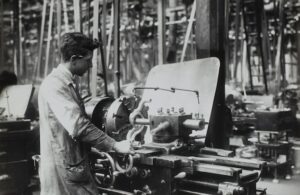What is Muda? What are the 8 types of waste? How to identify and eliminate them?
Muda is one of the main and most powerful concepts in Lean Six Sigma. Muda lies at the heart of the Toyota Production System philosophy. In my previous post, I explained how Lean focuses on cutting wasteful non-value-adding activities and introduced the 3Ms of Lean principles: Muda, Mura, Muri, which respectively mean wastefulness, unevenness, and overburden. In today’s post, I will tackle the first of the 3Ms: Muda. We will explore the origins of Muda, its definition, and what are its different types.
What is Muda?
“The most dangerous kind of waste is the waste we do not recognize.”
Shigeo Shingo
According to Taiichi Ohno, the father of lean and one of the forerunners of Lean Manufacturing and was part of the team that developed the Toyota Production System, one of the first steps to becoming lean is to eliminate waste in a process. In 1988, he defined seven types of Muda. An eighth Muda was added later on.
Muda is a Japanese must-know word that represents the philosophy of lean. Muda is defined as any activity that is unproductive, which absorbs resources and does not add to the value of the product is waste. It is a single concept that is all-encompassing when it comes to non-value-adding activities. When looking for mudas in your organization, Lean considers all types of waste that can occur in any kind of process or organization regardless of size and industry. It fosters a customer-first mentality and strives for continuous process improvement through applying several techniques.
What Are The 8 Types Of Waste
Lean principles focus on 8 types of waste. The acronym for the eight wastes is DOWNTIME.
- Defects: Products, services, or information that are wrong, incomplete, or late
- Overproduction: Making too much, or too soon
- Waiting: Waiting for anything… tools, equipment, materials, people, being idle
- Non–utilized talent: employing only people’s backs, and not their minds.
- Transportation and handling: Any unnecessary movement of the thing being processed
- Inventory Excess: Piles of anything. Parts, supplies, emails, paperwork, archives…
- Motion excess: Any unnecessary movement of human workers
- Extra-processing: Any process steps that do not add value — from the perspective of the customer
The importance of Waste in Lean
The idea of lean is a misunderstood concept. Often, individuals and companies associate the idea of lean with manufacturing; with unprofitable companies, or with cutting down budgets and laying off employees. Unfortunately, these are widespread misconceptions. Lean principles can be applied to any process. Whether you are manufacturing a product or offering a service, your processes can be wasteful and flawed.
Lean aims to first analyze processes and then apply lean principles whether in the office, in the assembly line, in an emergency room, or even in your personal life. The key steps towards accomplishing this are first to understand waste and the different ways it can manifest in your environment, then to identify it before being able to eliminate it.
Lean encourages you to go against the idea of: “if it isn’t broken, don’t fix it”. It asks you to look into every process you have even if it is functioning well in order to explore improvement opportunities. Lean is believing that there is always a place for improvement.
Becoming a Lean office is not about firing people to save resources; it is about tapping into non-utilized talent while keeping customer value at the forefront of what you do. Lean is about identifying wasted potential everywhere in your organization then applying lean methods. Lean allows you to unlock a new level of efficiency by improving and optimizing current processes whether it’s by a human or machine.
How To Identify and Eliminate Muda?
Waste can be present anywhere in your organization, in the smallest details. In order to eliminate it, you need to be able to see it. The problem with waste is that it can often go unnoticed because we don’t know where to look or even worse because we don’t know what waste looks like.
In the office, the 8 types of waste in the Lean methodology can manifest in different ways than we see them in a factory setting. This is why, in the coming posts, we will delve deep into each type of waste and give you concrete examples of how it can look in an office environment. With the first series of the blog: “How to See Waste: The 7+1 Mudas – Office Edition”, I hope to open your eyes to a new way of seeing waste, and help you identify wasteful practices to take your business to the next level.
See you in the next post,
And until then, stay LEAN!



